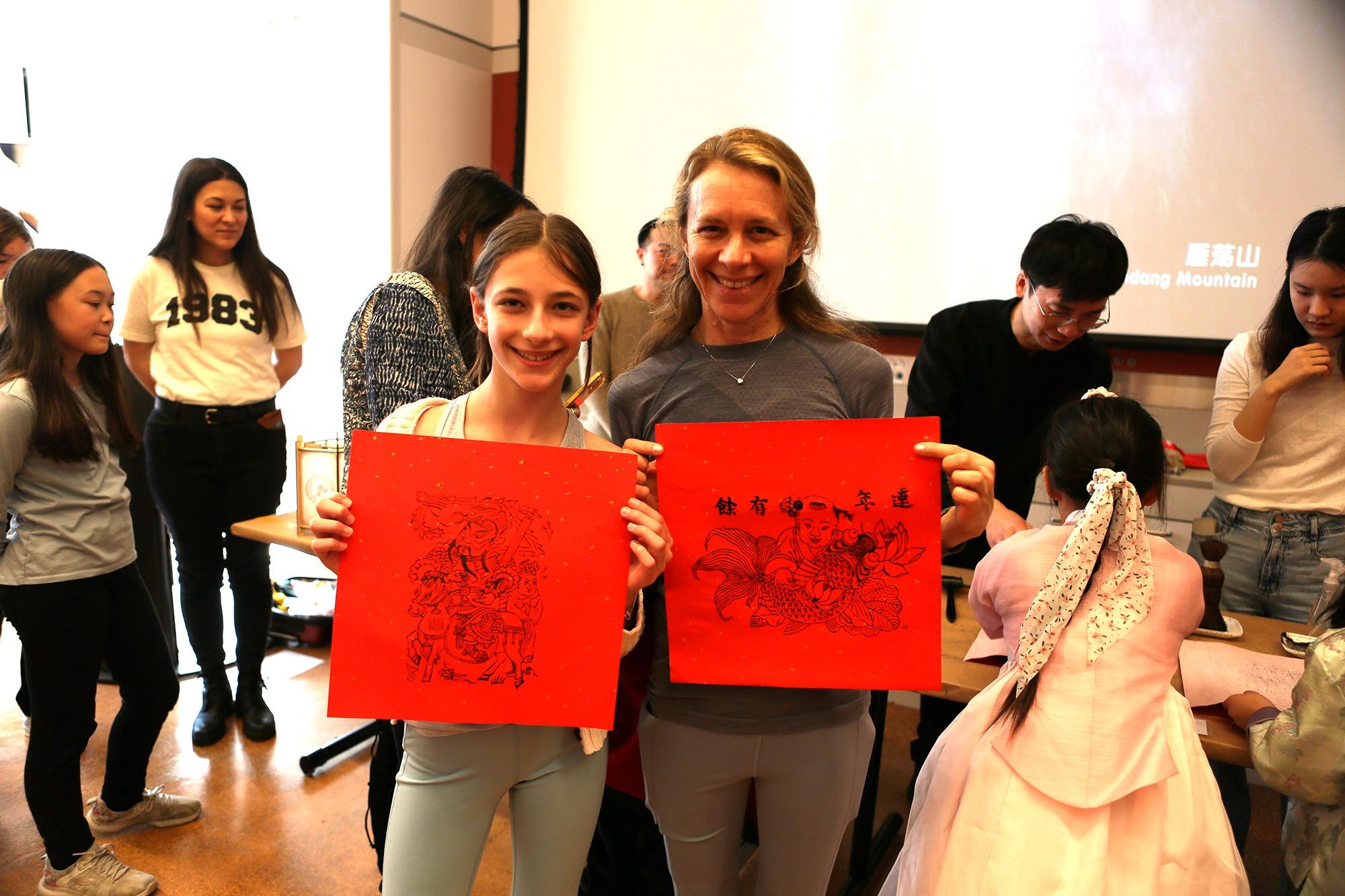US' largest museum wows visitors with experiences of China's cultural heritage
 Visitors pose with Chinese woodblock printing works they made at a Chinese New Year celebration event at the Metropolitan Museum of Art in New York on Feb 3, 2024. (PHOTO / XINHUA)
Visitors pose with Chinese woodblock printing works they made at a Chinese New Year celebration event at the Metropolitan Museum of Art in New York on Feb 3, 2024. (PHOTO / XINHUA)
The beat of drums echoed off the museum's walls as dragon dancers entered in procession. A golden dragon gracefully wove and twirled through the halls of the Metropolitan Museum of Art to celebrate the Year of the Dragon.
That was the scene on Saturday as the largest museum in the United States celebrated the Chinese New Year with visitors from around the world, featuring traditional Asian cultural experiences through hands-on workshops, including woodblock printing, lucky lantern decorating, and paper dragon folding.
A big part of this celebration is about cultural understanding. Cultural exchange is a part of the bread and butter.
Heidi Holder, chairwoman of education at the Metropolitan Museum of Art
Attendees also enjoyed traditional performances and demonstrations such as Chinese glove puppetry and calligraphy, poetry readings and Asian jazz performances.
READ MORE: International students embrace Chinese New Year traditions
"We're very pleased to start and kick it off with a dragon dance," Heidi Holder, chairwoman of education at the Met, said. "We used to have lions, but I felt that since the dragon is such an auspicious animal in the zodiac, as well as being connected to Chinese culture and even to the world, it was really important for us to have the dragon dance this year."
This year's celebration, the sixth for the Lunar New Year at the Met, is more extensive than in the past, she said. The Met had 18,000 participants last year, and Holder anticipates 20,000 visitors this year.
One special thing about this year's celebration is that the Met is working with the Chinese Consulate General in New York and invited woodblock makers from Zhejiang Provincial Cultural Center in China to demonstrate Chinese traditional woodblock printing, Holder said.
Huang Jiecheng, representative inheritor of China's national intangible cultural heritage project Hangzhou Woodblock printing, said, "During the Chinese New Year season, we take down old New Year paintings from the past year and put up new ones, anticipating a wonderful year ahead."
He demonstrated a painting of the "god of fortune" and showed it to workshop participants.
"Woodblock printing encompasses two of the four great inventions (in ancient China) — papermaking and printing, and it has more than 1,400 years of history since the Sui Dynasty (581-618)," he said.
"This is a deeply rooted cultural tradition in China. We are glad to see so many children participate, which provides them with an opportunity to engage and understand traditional Chinese culture from a young age, instilling in them the concept of learning from traditional heritage.
"Some of China's excellent traditional skills and crafts play a crucial role in paving the way for cultural exchange between the East and West. It serves as a window to understand China."
Before the pandemic, Huang said, "we hosted many American students from Chicago to experience woodblock printing in Hangzhou (of Zhejiang province)".
"I believe there will be many opportunities for such mutual exchanges in the future," he said.
Jacob Wolfard, 14, said: "I knew what the Chinese New Year was, but I had never really gone to anything until this morning."
The woodblock printing "is very fun, it's very cool, and we are going to see the Chinese calligraphy later", he added.
Jacob's mother Krystal Wolfard said, "I'm excited about that there is so much culture here, and we just wanted to learn about it."
Wolfard said she was new to the city, and it was her first time celebrating Chinese New Year in such a way.
ALSO READ: A journey through history
Julie, who was with her daughter Tabi, said: "There is a lot for me to learn. I find it very vibrant and exciting. I'd like to understand more of the meanings behind the different symbols and different holidays. We need to keep building relationships, engaging in each other's culture, don't let the political and economic divisions keep us from enjoying each other's culture."
Holder, who is also spokeswoman for the New Year celebration said: "This is a very exciting opportunity to work with living artists to preserve culture.
"A big part of this celebration is about cultural understanding. Cultural exchange is a part of the bread and butter. It's the fabric of the document as is a lot of what the Met does.
"If we can have one wish for the new year: improving cultural understanding, peace and prosperity."


